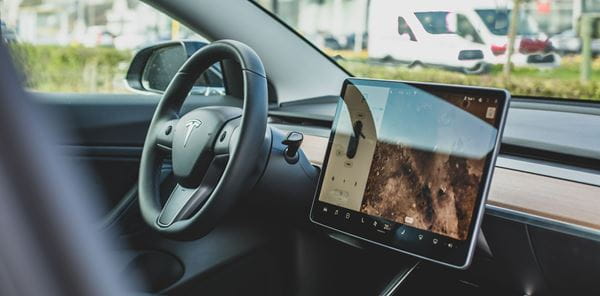
Why AdBlue®? - The Euro 6 Emission Standards
All diesel cars being registered in EU member states have to abide by the Euro 6 emission standards. The Euro 6 emission standards aim to make diesel cars cleaner. Learn more about AdBlue® and the Euro 6 Emission Standards.
From September 2015, all diesel cars being registered in EU member states have to abide by the Euro 6 emission standards. The Euro 6 emission standards aim to make diesel cars cleaner. They mainly aim to:
- Reduce the nitrogen oxide emissions of diesel cars. Nitrogen oxide is a harmful polluting substance that has been proven to have serious negative health implication as well as negative effects on the environment
- The Euro 6 standard aims to reduce the allowed nitrogen oxide emission of diesel cars from the 180mg/km limit down to a maximum of 80mg/km
- The limit for nitrogen oxide emission remains at 60mg/km for petrol cars, as it was for the Euro 5 emission standards
What is AdBlue®?
AdBlue® is a solution composed of Urea and demineralised water; it is a non-toxic, non flammable, colourless and odourless solution. AdBlue® is injected in the engine’s gas exhaust system resulting in a chemical reaction that converts the nitrogen oxide that is produced by diesel cars to harmless water vapour as well as nitrogen. By decreasing the amount of nitrogen oxide being produced by cars, AdBlue® supports cars in meeting the Euro 6 Standards2.
Do I need to fill my Car with AdBlue®?
For most drivers, AdBlue® can last for thousands of kilometres, meaning it would usually need to be refilled at the scheduled servicing. It might be the case though, depending on the usage of the vehicle that drivers would need to “top up” their AdBlue®. It is recommended that cars have at least five litres of AdBlue® at all times. If drivers are taking their cars outside Europe, they are advised to fill up their AdBlue® tanks beforehand, and even take an extra AdBlue® container with them.
How often does the tank need to be refilled?
The tank’s capacity is designed so that it should not need to be filled between service intervals.
- In case of an AdBlue® shortage a message informing the driver will appear on the dashboard.
- If the car has less than three litres of AdBlue®, the engine will not start.
One litre of AdBlue® will be sufficient to drive the car for approximately 1000 Km.
Where do I buy AdBlue®?
Containers of AdBlue® solution can be found in:
- All garages
The containers are easy to use and they are designed to fit directly with the vehicle’s AdBlue® tank.
How to refill the AdBlue® tank:
AdBlue® will have its own tank, the AdBlue® fluid will have to be poured directly into the AdBlue® tank and not in the fuel tank. AdBlue® should not be mixed with other chemicals, nor should it be diluted with water.
Also, In order to refill the AdBlue® tank, the car must be parked on a level surface to avoid overfilling and damage to the AdBlue® tank.
Fleet management implications
The use of AdBlue® is an additional SMR cost element for diesel engine vehicles. Fleet managers need to be informed on the topic, including the processes and cost elements associated with AdBlue®. Drivers also need to be informed, through a driver’s guide, on how to act in case their involvement is required.
References
- 1.Ioannis Alevizos (After Sales Development Manager), Daniel Naguib (After Sales Analyst) of LPSS After Sales Team
- 2.Adblue Trademark registered by the German Association of the Automobile Industry (VDA)
- 3.“You and Adblue”, Mercedes Benz





